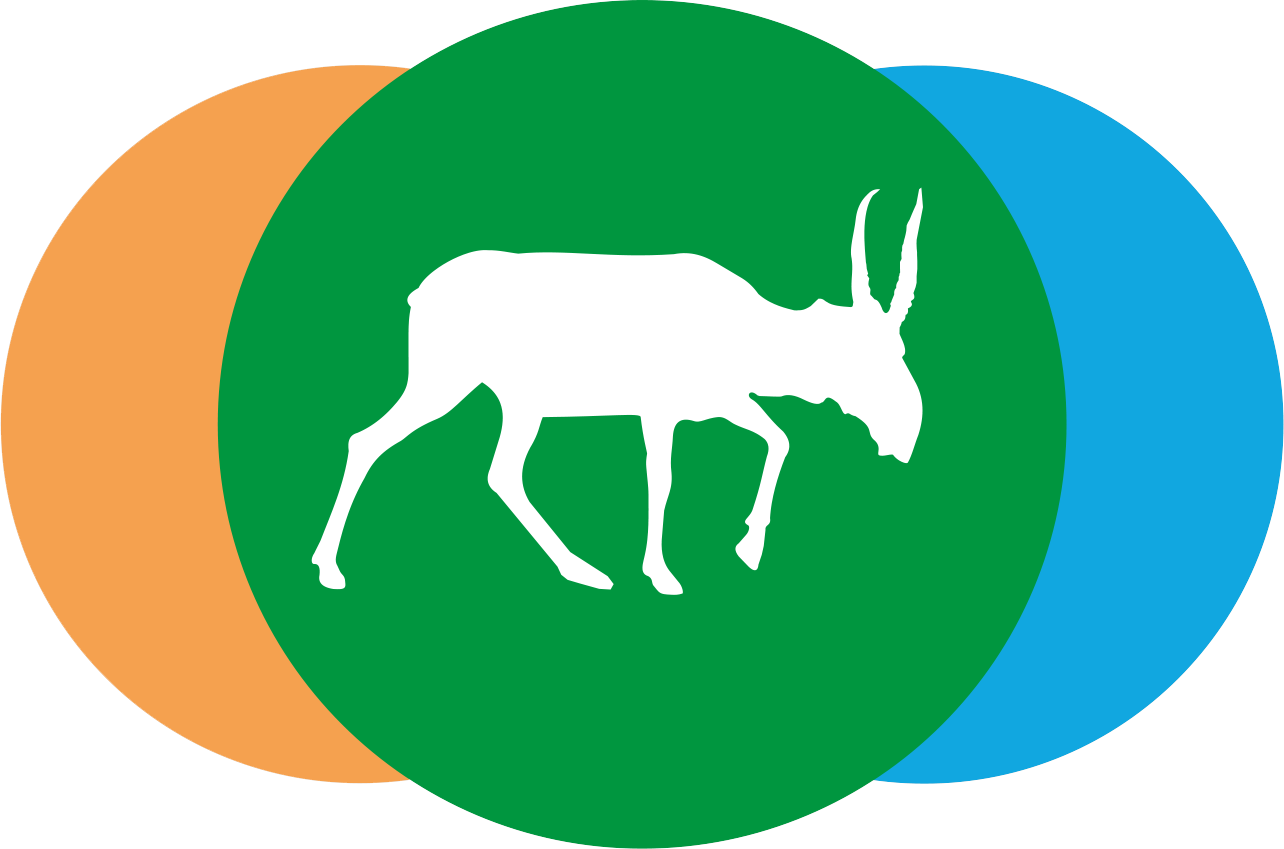“Jurassic Lake Karatau” is the world’s largest Jurassic insect locality, located on the northeastern slope of the Karatau range, at the border of Zhambyl and Turkestan regions. It is one of the few places on Earth where exceptionally thin-bedded rocks, known as “paper” or “fish” shales, preserve remains of animals and plants that lived about 160 million years ago. More than 800 species of Mesozoic insects are known from here, along with unique finds of pterosaurs, amphibians, and fishes that inhabited Kazakhstan during the age of dinosaurs.
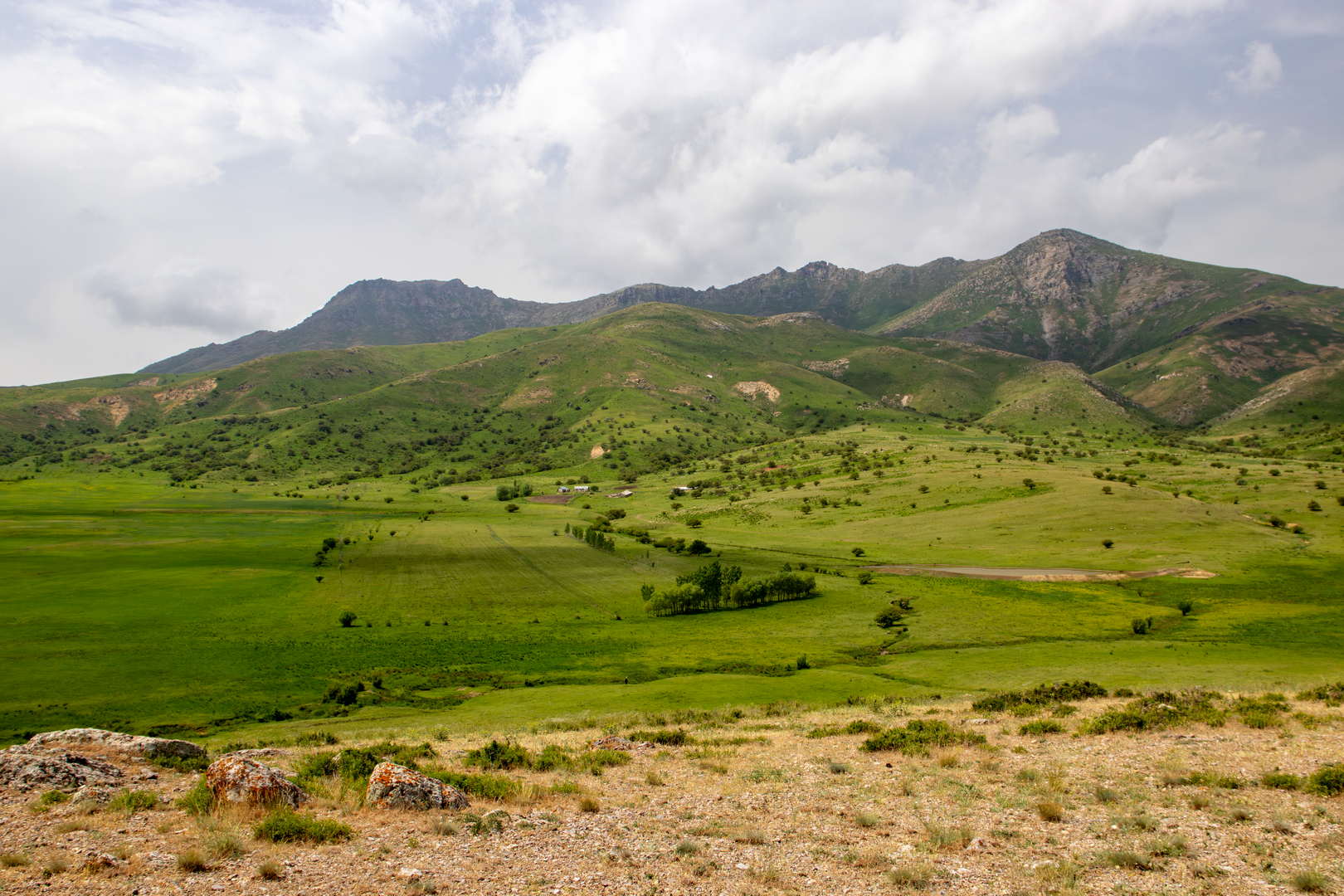
Karatau, valley near the village of Konyrtobe (Galkino)
The first Upper Jurassic fauna and flora locality in the Karatau Mountains was discovered in 1921 by engineer A.A. Aniskovich during coal prospecting at the southeastern end of the range near the village of Galkino (now Konyrtobe). Exactly 100 years ago, in 1925, the first paper describing insects from this locality was published by the prominent Russian entomologist A.V. Martynov (1879–1938).

Andrey Vasilievich Martynov – discoverer of fossil insects from Karatau 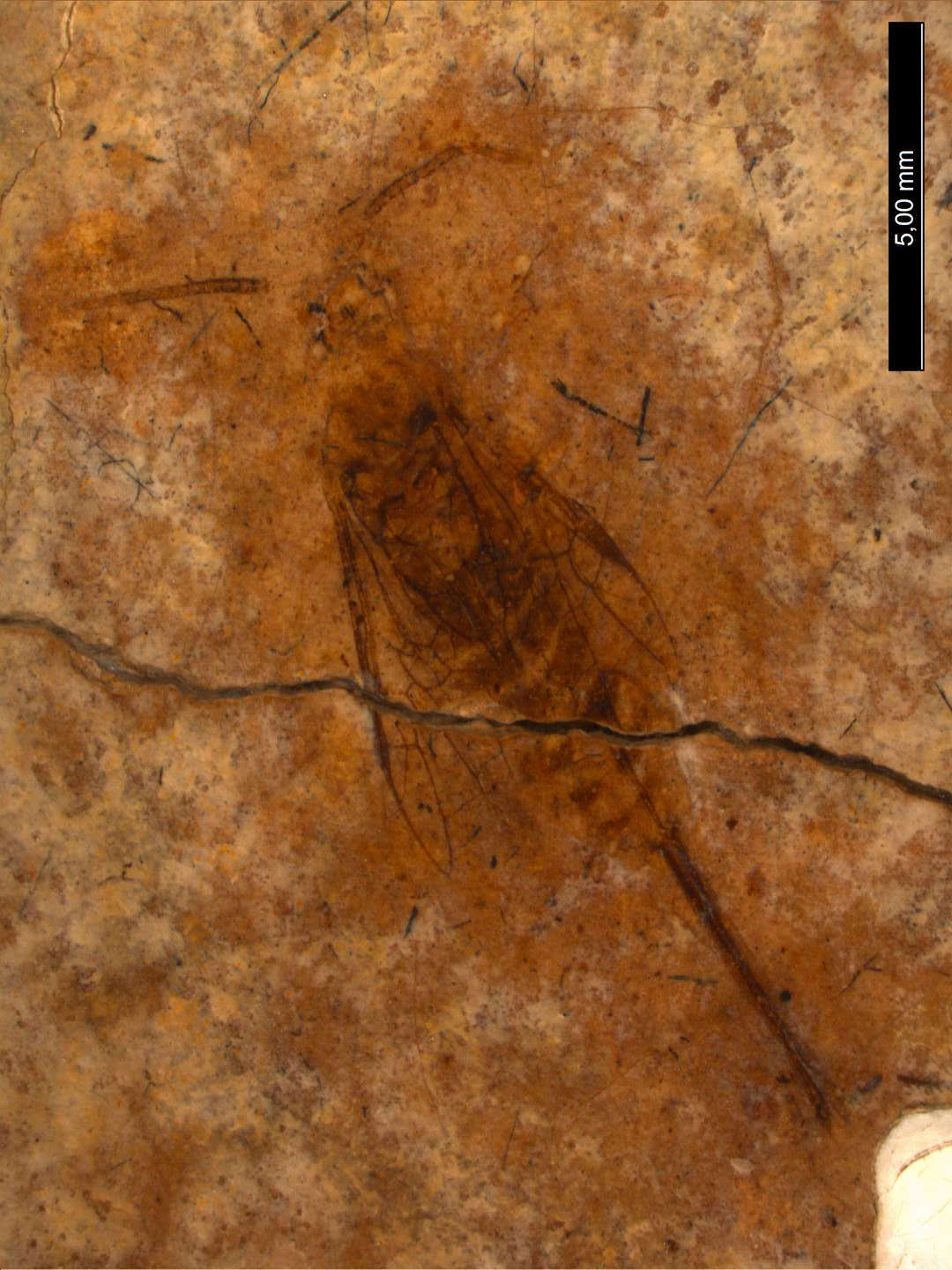
Anaxyela gracilis Martynov, 1925 (Karatau) – the first anaxyelid fossil record
In the twentieth century, dozens of expedition teams from the USSR Academy of Sciences worked in Karatau, gathering a rich collection of more than 20,000 fossil specimens, most of which are now stored at the Paleontological Institute RAS in Moscow. However, in recent decades field studies of these unique deposits almost ceased.
In May 2025, for the first time in many years, the Institute of Zoology conducted a paleontological expedition to the Jurassic deposits of Karatau. During fieldwork, four key sections of the Karatau complex were studied, and more than 800 impressions of fossil insects, fishes, and plants were collected. This is now the largest collection of Jurassic fauna from Karatau in Kazakhstan!
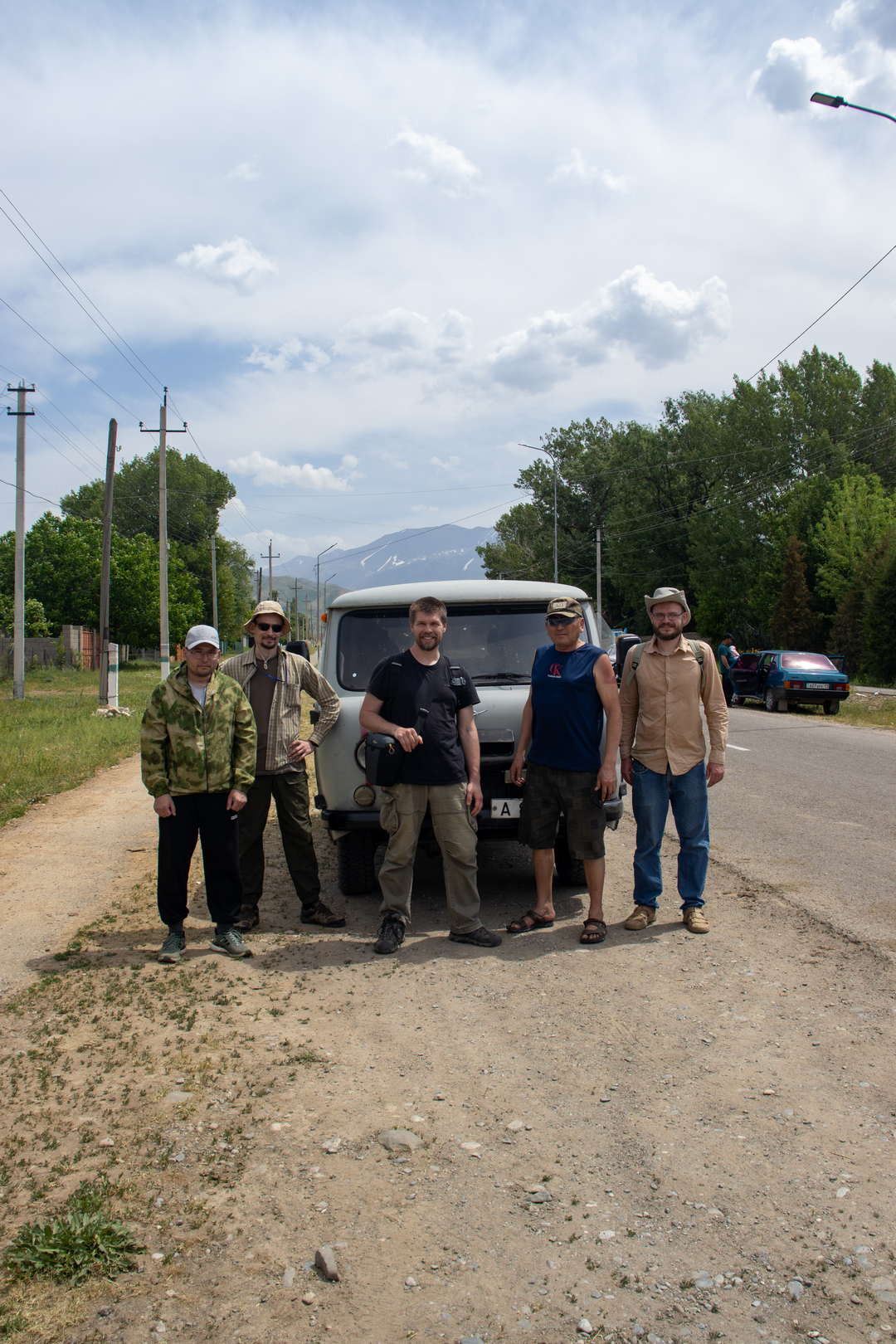
Expedition participants in Karatau, 2025 (left to right): Bakhtiyar Temirkhanov, Alexey Bashkuev, Dmitry Kopylov, Yerzhan Boranbayev, Alexander Khramov 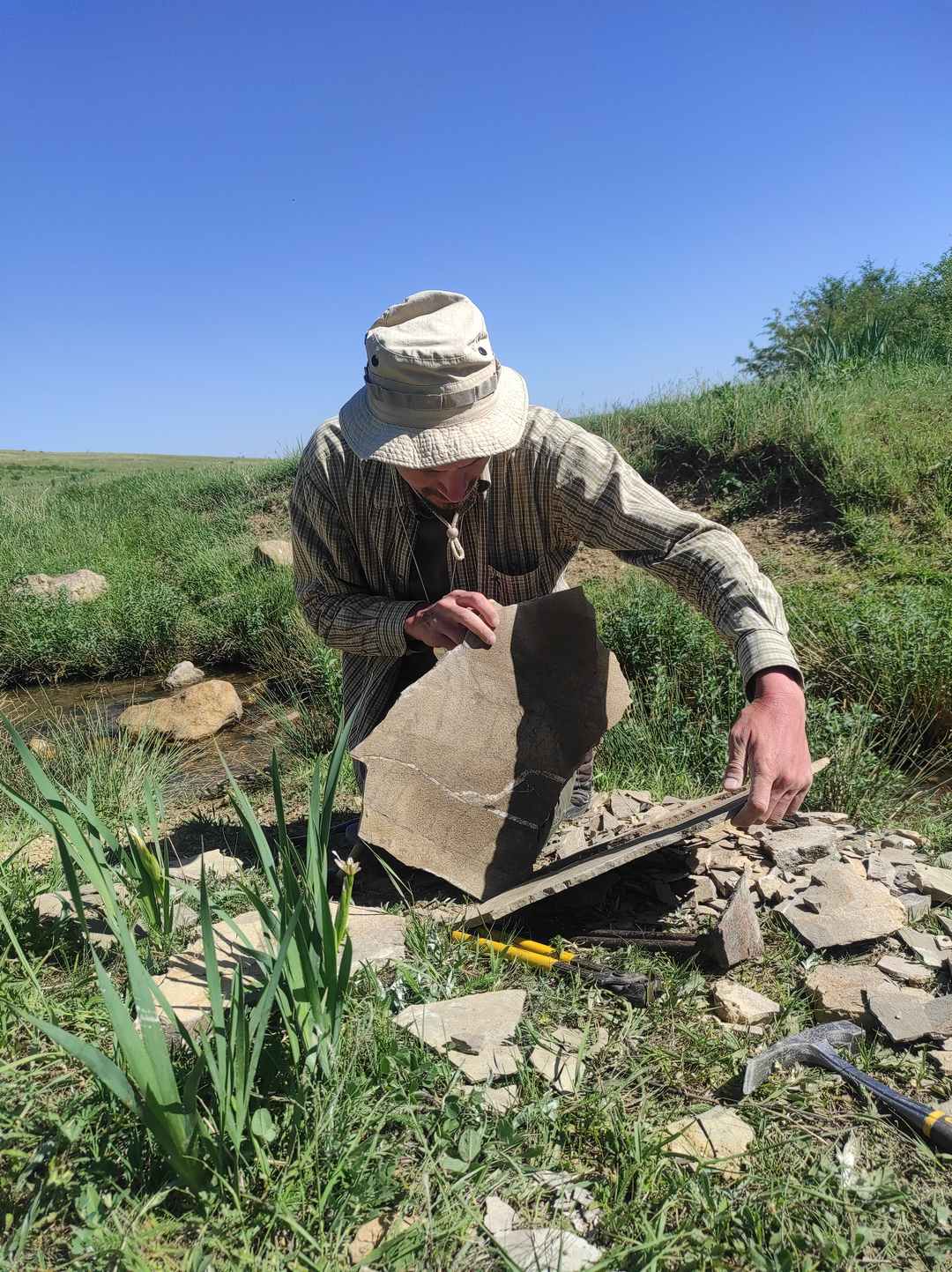
Searching for Jurassic organisms in the “fish” shales of Karatau
Among the collected specimens, one immediately caught the researchers’ attention: an impression of a sawfly belonging to the family Anaxyelidae. Anaxyelids were already known from Karatau, but this find turned out to be unique: it is the first record in Kazakhstan and only the second Jurassic representative of the subfamily Syntexinae worldwide!
Anaxyelids are a relict group of sawflies. In the modern fauna, the family is represented by a single species, Syntexis libocedrii, inhabiting North American forests. Syntexis larvae develop in the wood of gymnosperm trees. Interestingly, females oviposit exclusively in trees recently affected by forest fires.
In contrast to their modest modern status, anaxyelids were one of the dominant insect groups in the Late Mesozoic. More than 50 species of this family are known from Jurassic and Cretaceous deposits. Remarkably, their distribution during the time of dinosaurs does not match the modern one: most finds come from Asia, while none are known from the Americas.
Taxonomically, anaxyelids are divided into two subfamilies: Anaxyelinae, dominant in the Jurassic, and Syntexinae, which rose to prominence in the Cretaceous and survived to the present day. Anaxyelines from Karatau have long been known, the first described by A.V. Martynov in 1925, with overall diversity reaching 21 species. However, the new discovery is unique — the first Karatau representative of the modern subfamily Syntexinae. The specimen was described as a new genus and species, Karasyntexis martynovi, named in honor of the discoverer of Karatau’s entomofauna.
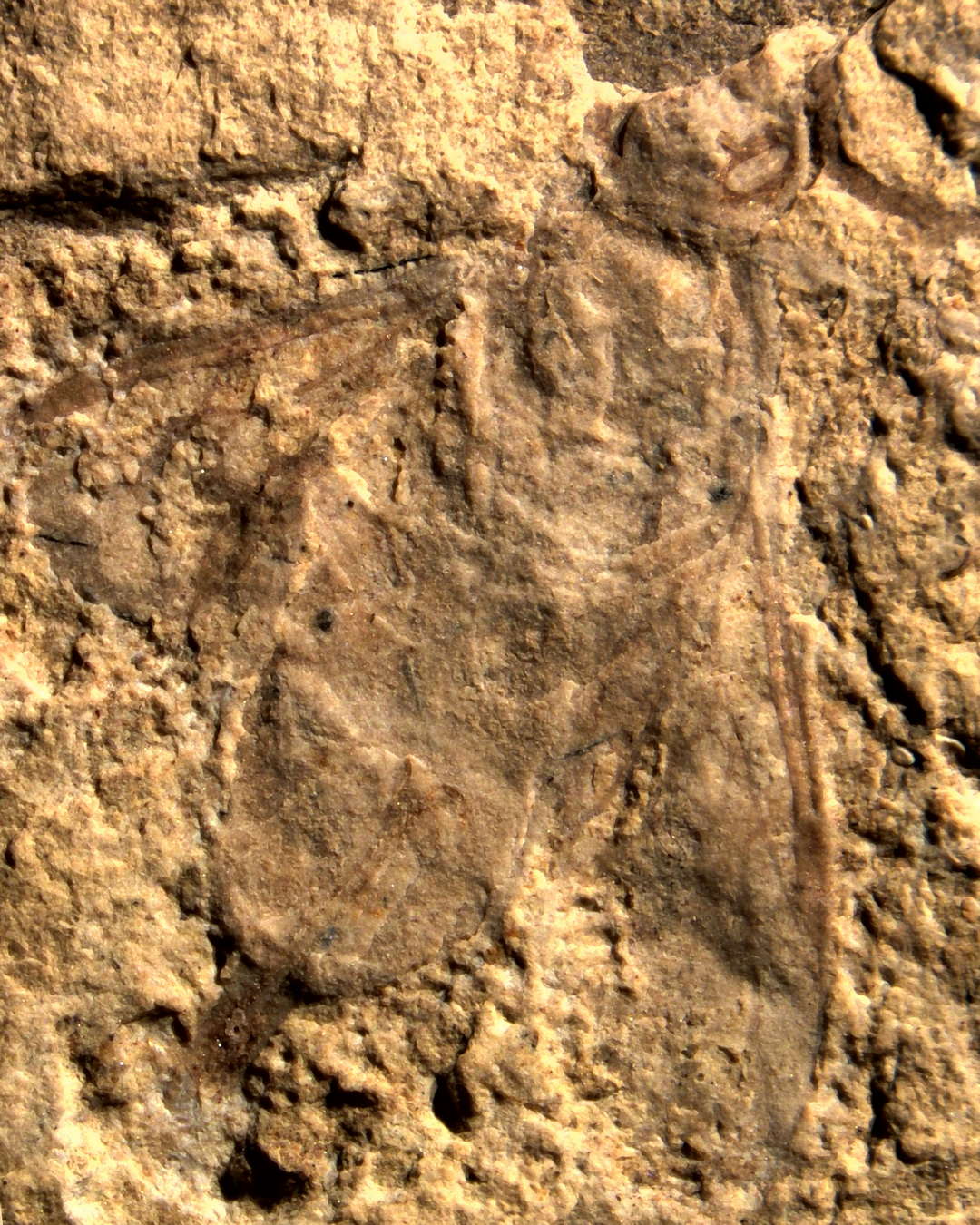
Holotype Karasyntexis martynovi Kopylov et Rasnitsyn, 2025, Karatau, Upper Jurassic, Kazakhstan 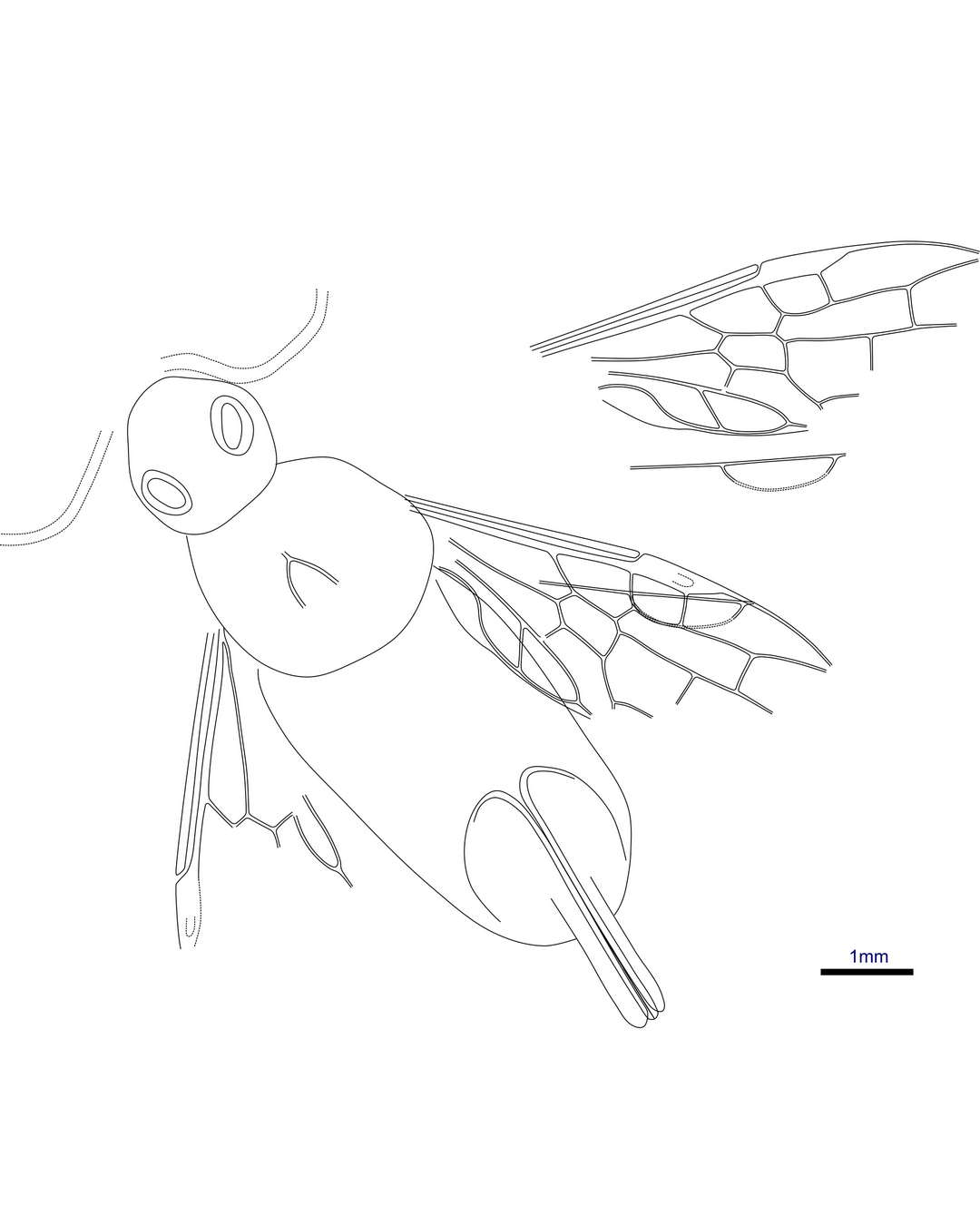
Reconstruction of Karasyntexis martynovi Kopylov et Rasnitsyn, 2025
Based on these studies, Dmitry S. Kopylov (head of the Paleozoology Laboratory, Institute of Zoology RK) together with Alexander P. Rasnitsyn (Paleontological Institute RAS) published a paper on Anaxyelidae from the Jurassic shales of Karatau: Kopylov, D.S.; Rasnitsyn, A.P. Anaxyelidae of Karatau: 100 Years After. Insects 2025, 16, 943. DOI: 10.3390/insects16090943
The work by Kopylov and Rasnitsyn is not just a description of a single novelty. It marks the framework of a major research program: re-examining and photographing key sections, revising old types with modern methods, and establishing a full national collection of Karatau’s Jurassic fauna in Kazakhstan. Karatau remains a field of discoveries: more than 80% of the complex’s species diversity is known from single finds, indicating a high potential of undiscovered biodiversity hidden in the geological strata.
For the Institute of Zoology RK this is both a symbolic and practical milestone: we are returning to our national heritage, strengthening cooperation with the Paleontological Institute RAS, and developing domestic paleontology to a level comparable with the best world centers.
The research was carried out within the project “Development of an information system for maintaining a cadastre of wild animals of the Western Tien Shan for their conservation and sustainable use,” IRN BR24993060.
“Jurassic Lake Karatau” has been under scientific attention for a century. Over this time, extensive collections comprising tens of thousands of specimens have been accumulated, and more than 800 species have been described. Nevertheless, the site still holds many secrets, and new discoveries will continue to provide valuable material for future generations of researchers.
Photo: D.S. Kopylov, Wikipedia
01.10.2025
